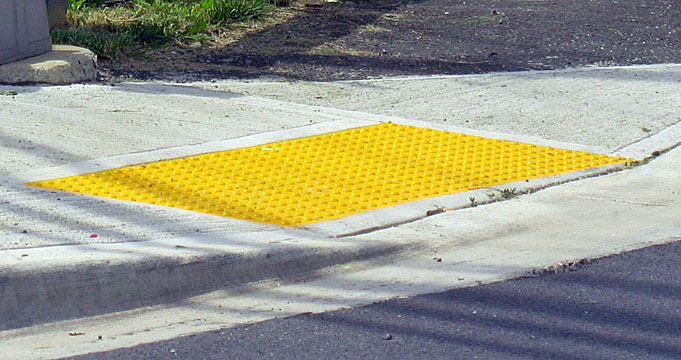
Designed either built-in or applied to walking surfaces, truncated domes are a standard surface element used to alert pedestrians of risks on a circulation path. Stated differently, truncated domes are mats with raised three-dimensional bumps that warn a visually impaired individual he or she is about to go into a parking lot of perhaps unsafe vehicle traffic.
Regarding truncated dome mats, one has a lot of choices. Still, most individuals usually follow one of the top two major options. Although it is more costly than the other two and is consequently hardly chosen in use, a third choice is masonry paving stone. The two most often used types of truncated domes are soft glue-down truncated domes, which are surface applied, and hard plastic truncated domes, which are cast in place.
Among the benefits of the cast-in-place mat is simplicity of application. Install cast-in-place matting straight into fresh or wet concrete. This kind of mat can be recessed in areas where winter snowfall calls for plowing to prevent damage to the plows. Certain makers of this kind of truncated dome have even developed a “quick removal and replacement” form of the mat for simple replacement. Furthermore, cast-in-place carpets are quite robust since their strong, resistant composition resists harm.
Drawbacks of Cast-in-Place Mats
While cast-in-place mats are durable, you should be aware of several specific drawbacks including location and visual appeal. Highly durable materials used in cast-in-situ truncated mats help to prevent total deterioration. But these kinds of mats can warp and flex over time and with sun and water damage, producing a raised edge. If warped cast-in-place mats are not immediately addressed, they can provide major trip hazards for both visually challenged and non-visually impaired walkers, therefore increasing the risk of a perhaps expensive lawsuit.
Additionally prone to fade with extended sunshine are cast-in-place mats. This results in unattractive stains that could compromise the general impression of a high-end company or venue. Most of these mats cannot be painted over, hence if you want nice, homogeneous mats, you will have to replace them—a pricey effort. While some people might not give a damn about the appearance of their cast-in-place mats, keep in mind that newly installed mats simply accentuate the discoloration of surrounding mats. Thus, if you replace one for aesthetic purposes, you will have to replace every single one of the other mats as well to avoid this ugly contrast.
Advantages of Glue-Down Mats
Though there are many different glue-down mats, most of them are strong, dependable mats with various benefits over cast-in-place mats. Longer lifetime and less cost maintenance over time are the two key benefits adhesive down mats offer.
Made of spun rubber material—both paintable and repairable—glue down mats are usually, sun or water damage causes individual domes to vanish as these mats mature. Still, the mat’s surface stays well glued. Furthermore, a qualified contractor may simply and quickly repair the missing domes for a far lesser cost than it would take to replace the complete mat.
Key Take-Away
Remember location when deciding on the kind of truncated domes mat your project calls for. Should your project call for freshly poured concrete, you could wish to give cast-in-place mats some thought. Given their adaptability and durability, surface-applied mats are most likely your best option if you are just modifying an existing project to comply with regulations.
